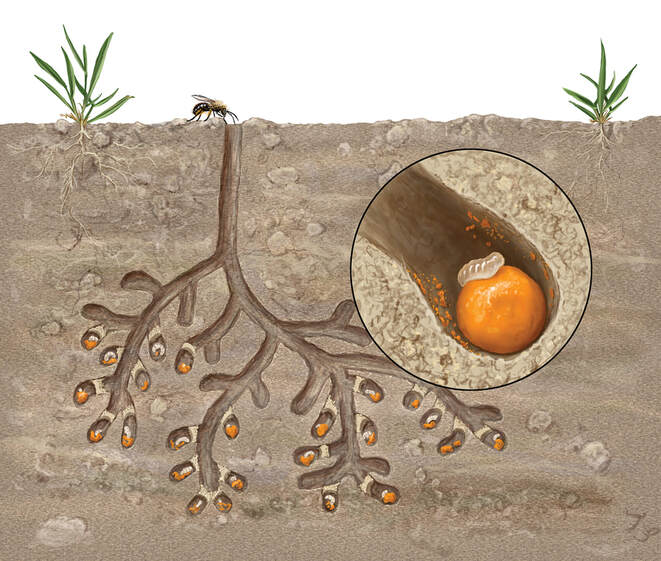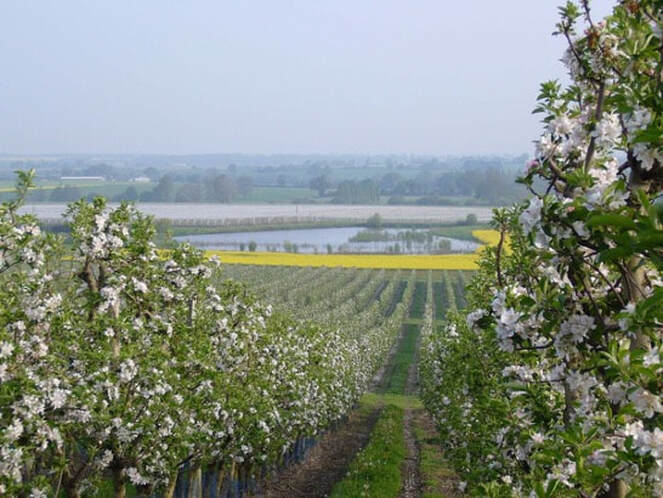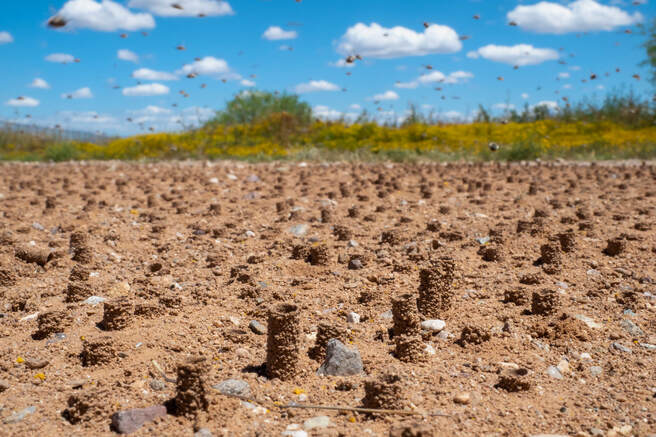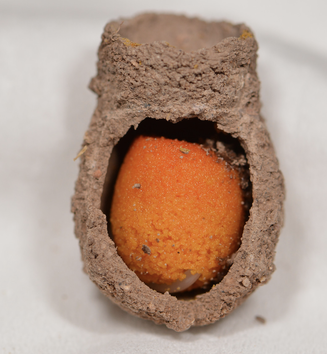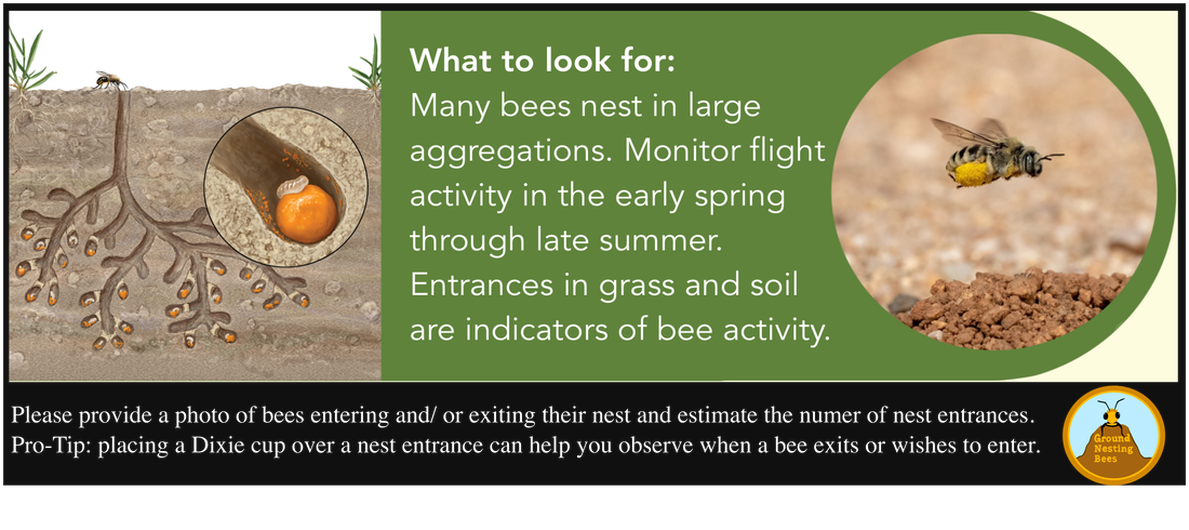Project GNBee
|
Objectives: (1) Engage community scientists to locate and map nesting sites of ground nesting bees, (2) use biotic and abiotic landscape data from existing nest-sites to develop a predictive model for nesting, (3) encourage native bees in agricultural settings to enhance fruit production.
|
|
�
Nesting Biology
Ninety percent of all bees are solitary and seventy percent of bees nest in the ground. Many bees form large long-standing aggregations and provide crucial pollination services that enhance ecosystem resilience and food security. Yet, our knowledge of the nesting requirements for nearly 20,000 species world wide (4,000 of which are found in the USA) is sorely lacking.
Pollination/nesting is done by single mothers.
|
|
Economic Impact
Pollination from bees delivers 100’s of billions (USD-$) annually to the global economy. Wild bees arrive at no cost to farmers and improve the quality and quantity of their harvest. High value, nutritious specialty crops such as apples, cherries, plums, apricots, blueberries, and strawberries are dependent on diverse bee populations for fruit production. For many crops, greater access to diverse bees can increase productivity.
Your favorite fresh food is facilitated by pollinators.
|
|
Conservation
Bees are threatened by a multitude of human disturbances (death by a thousand cuts), and landscape change leading to habitat loss is a central issue. The global decline in bee diversity mandates swift action. By locating and then protecting long-term nesting aggregations we can begin to conserve vulnerable species of bees.
Protecting nesting sites also safeguards co-occurring species and enhances ecosystem stability. We should act now to protect bee aggregations
|
iNaturalist provides a platform for our community to map observations of ground nesting bees.
Find an aggregation in your area and upload a photo.
Find an aggregation in your area and upload a photo.
|
Find us at iNaturalist — Ground Nesting Bees Protocol to join the project and upload observations
|
|
Follow us on Instagram to see our latest community highlights
|
Publications
| Harnessing Community Science to Conserve and Study Ground-Nesting Bee Aggregations.pdf | |
| File Size: | 1115 kb |
| File Type: | |

